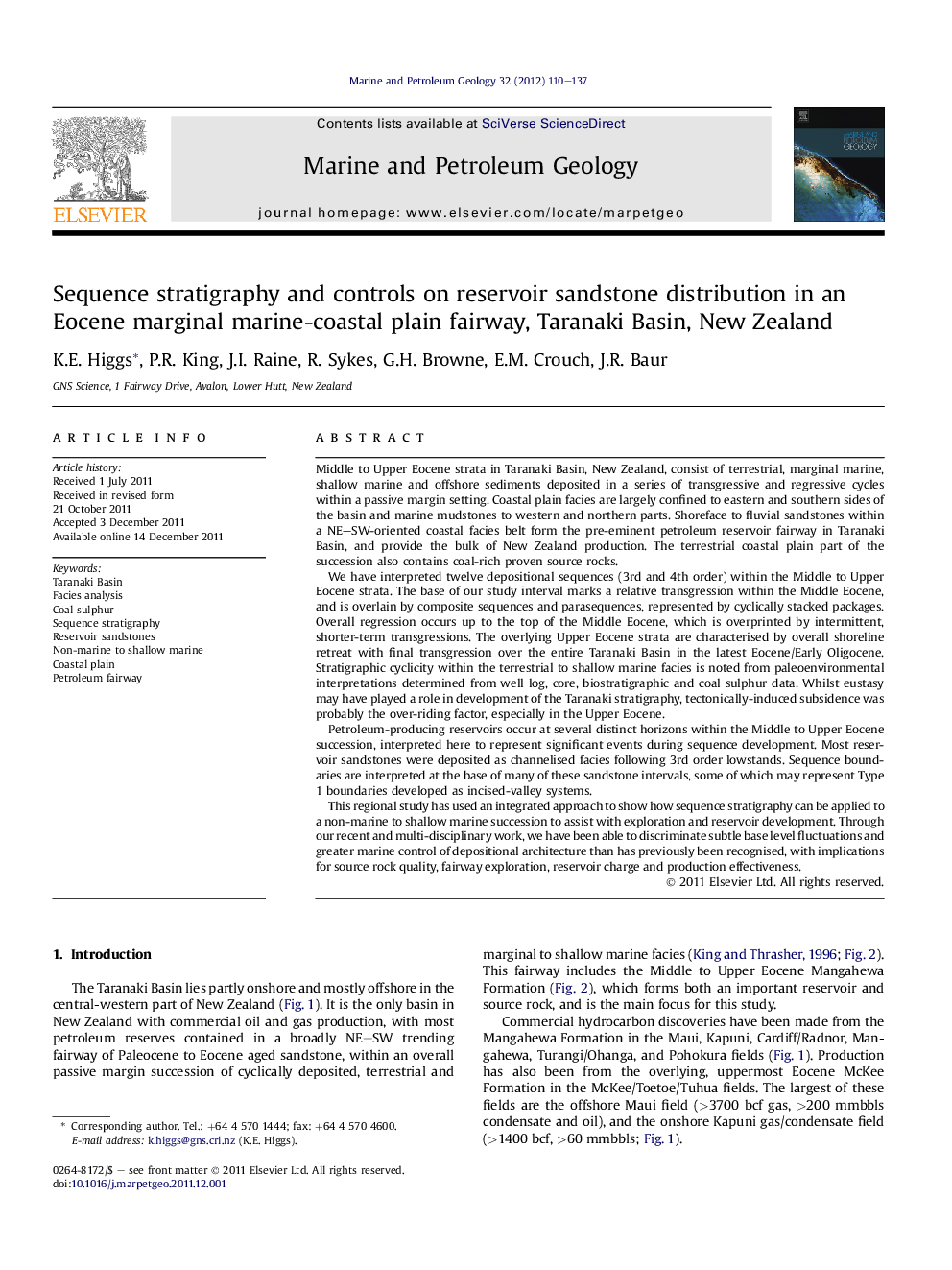| کد مقاله | کد نشریه | سال انتشار | مقاله انگلیسی | نسخه تمام متن |
|---|---|---|---|---|
| 4695926 | 1351644 | 2012 | 28 صفحه PDF | دانلود رایگان |

Middle to Upper Eocene strata in Taranaki Basin, New Zealand, consist of terrestrial, marginal marine, shallow marine and offshore sediments deposited in a series of transgressive and regressive cycles within a passive margin setting. Coastal plain facies are largely confined to eastern and southern sides of the basin and marine mudstones to western and northern parts. Shoreface to fluvial sandstones within a NE–SW-oriented coastal facies belt form the pre-eminent petroleum reservoir fairway in Taranaki Basin, and provide the bulk of New Zealand production. The terrestrial coastal plain part of the succession also contains coal-rich proven source rocks.We have interpreted twelve depositional sequences (3rd and 4th order) within the Middle to Upper Eocene strata. The base of our study interval marks a relative transgression within the Middle Eocene, and is overlain by composite sequences and parasequences, represented by cyclically stacked packages. Overall regression occurs up to the top of the Middle Eocene, which is overprinted by intermittent, shorter-term transgressions. The overlying Upper Eocene strata are characterised by overall shoreline retreat with final transgression over the entire Taranaki Basin in the latest Eocene/Early Oligocene. Stratigraphic cyclicity within the terrestrial to shallow marine facies is noted from paleoenvironmental interpretations determined from well log, core, biostratigraphic and coal sulphur data. Whilst eustasy may have played a role in development of the Taranaki stratigraphy, tectonically-induced subsidence was probably the over-riding factor, especially in the Upper Eocene.Petroleum-producing reservoirs occur at several distinct horizons within the Middle to Upper Eocene succession, interpreted here to represent significant events during sequence development. Most reservoir sandstones were deposited as channelised facies following 3rd order lowstands. Sequence boundaries are interpreted at the base of many of these sandstone intervals, some of which may represent Type 1 boundaries developed as incised-valley systems.This regional study has used an integrated approach to show how sequence stratigraphy can be applied to a non-marine to shallow marine succession to assist with exploration and reservoir development. Through our recent and multi-disciplinary work, we have been able to discriminate subtle base level fluctuations and greater marine control of depositional architecture than has previously been recognised, with implications for source rock quality, fairway exploration, reservoir charge and production effectiveness.
► Depositional cyclicity is illustrated within marginal marine-coastal plain facies.
► Coal stacking patterns and coal sulphur are used to help define sedimentary cycles.
► The study interval comprises a 2nd order prograding and transgressive sequence set.
► 3rd and 4th order stratigraphic cyclicity is superimposed on the 2nd order cycle.
► Many reservoir sandstones represent channel facies following 3rd order lowstands.
Journal: Marine and Petroleum Geology - Volume 32, Issue 1, April 2012, Pages 110–137